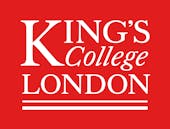Dr Karl Lawrence graduated from Sheffield Hallam University in 2011 with a degree in Pharmaceutical Science and has worked as a research assistant at the Wellcome Trust Sanger Institute in Cambridge. Karl then undertook a PhD in the Photobiology Department at St. John’s Institute of Dermatology, King’s College London under the supervision of Professors Antony Young and Paul Long, graduating in 2017.
Karl's PhD research focused on the adverse effects of ultraviolet radiation and visible light on the skin and its photoprotection, using conventional synthetic UV filters and natural compounds as biocompatible alternatives. Karl has also worked on chemical and biological antioxidants as a method of photoprotection, and was involved in other products investigating UV induced vitamin D production and the influence of melanin on photobiological responses.
After graduating Karl has worked as a post doctoral researcher at Queen Mary, University of London working on the development of a device to maintain ex vivo skin for research and toxicology testing. This work led to the formation of a QMUL spinout company, Keratify, where he acted as CSO for 3 years, responsible for device development and testing for external contracts.
Karl is now a Research Fellow at KCL in the Jones group at the Institute of Pharmaceutical Science, working on developing a device that allows non-invasive sampling from the skin, with applications in disease diagnosis and monitoring.
Experience
-
2023–presentResearch Fellow, King's College London
-
2019–2023Chief Scientific Officer, Keratify
-
2019–2023Visiting Post Doctoral Research Assistant, Queen Mary, University of London
-
2017–2019Post Doctoral Research Assistant, King's College London
-
2013–2017PhD student, King's College London
Education
-
2017King's College London, Photobiology/Dermatology
-
2011Sheffield Hallam University, Pharmaceutical Science BSc (Hons)
Publications
-
2021Italian expert-based recommendations on the use of photo(chemo)therapy in the management of Mycosis Fungoides: results of an E-Delphi consensus, Photodermatology Photoimmunology and Photomedicine
-
2021A new visible light absorbing organic filter offers superior protection against pigmentation by wavelengths at the UVR-visible boundary region, Journal of photochemistry and photobiology. B, Biology
-
2021DNA Photodamage: From Light Absorption to Cellular Responses and Skin Cancer, Royal Society of Chemistry
-
2021The photoprotective properties of α-tocopherol phosphate against long-wave UVA1 (385 nm) radiation in keratinocytes in vitro, Scientific Reports
-
2021Perspectives on Cyclobutane Pyrimidine Dimers – Rise of the Dark Dimers, Photochemistry and Photobiology
-
2021A revised action spectrum for vitamin D synthesis by suberythemal UV radiation exposure in humans in vivo, Proceedings of the National Academy of Sciences
-
2019The impact of solar ultraviolet radiation on fish: Immunomodulation and photoprotective strategies, Fish and Fisheries
-
2019Melanin has a Small Inhibitory Effect on Cutaneous Vitamin D Synthesis: A Comparison of Extreme Phenotypes, Journal of Investigative Dermatology
-
2019Optimal sunscreen use, during a sun holiday with a very high ultraviolet index, allows vitamin D synthesis without sunburn, British Journal of Dermatology
-
2018The UV/Visible Radiation Boundary Region (385–405 nm) Damages Skin Cells and Induces “dark” Cyclobutane Pyrimidine Dimers in Human Skin in vivo, Scientific Reports
-
2018The mycosporine-like amino acids porphyra-334 and shinorine are antioxidants and direct antagonists of Keap1-Nrf2 binding, Biochimie
-
2018Sunscreen applied at ≥ 2mg/cm2 during a sunny holiday prevents erythema; a biomarker of UVR‐induced DNA damage and suppression of acquired immunity, British Journal of Dermatology
-
2018Sub-optimal Application of a High SPF Sunscreen Prevents Epider mal DNA Damage in Vivo, Acta Dermato-Venereologica
-
2017Molecular photoprotection of human keratinocytes in vitro by the naturally occurring mycosporine-like amino acid (MAA) palythine, British Journal of Dermatology
-
2017Mycosporine-Like Amino Acids for Skin Photoprotection, Current Medicinal Chemistry
- London, United Kingdom
- Article Feed
- karl.1.lawrence@kcl.ac.uk
-
For media enquiries,
Karllawrence121@gmail.com - ORCID
- Joined


